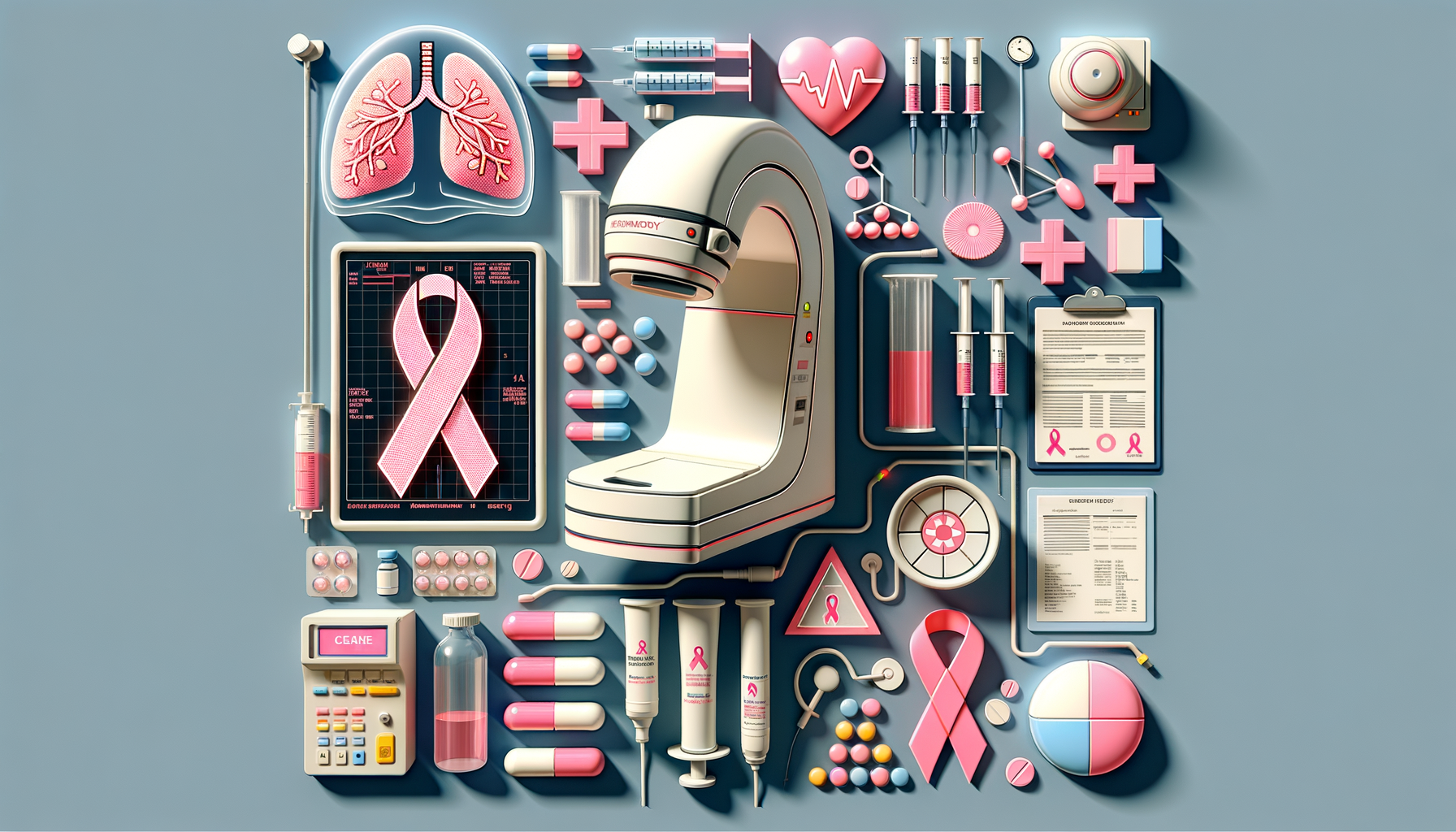Introduction to Breast Cancer Treatment
Breast cancer is a significant health concern worldwide, affecting millions of individuals each year. Understanding the various treatment options available is crucial for those diagnosed and their families. Breast cancer treatment can include surgery, radiation, chemotherapy, or hormone therapy, depending on the diagnosis. Each approach has its unique benefits and challenges, making it essential to tailor treatment plans to each person’s specific situation. This article aims to provide a comprehensive overview of the treatment options available, highlighting the importance of consulting with healthcare professionals to ensure the best approach and ongoing support throughout the process.
Surgical Options in Breast Cancer Treatment
Surgery is often one of the primary treatments for breast cancer. It involves the physical removal of the tumor and surrounding tissue. There are several types of surgical procedures used:
- Lumpectomy: This procedure involves removing the tumor and a small margin of surrounding tissue while preserving the rest of the breast. It is often followed by radiation therapy to eliminate any remaining cancer cells.
- Mastectomy: Involves the removal of one or both breasts, partially or completely. It’s considered when the cancer is widespread or if there are multiple tumors.
- Reconstructive Surgery: Often follows a mastectomy to restore the breast’s appearance. It can be done using implants or tissue from other parts of the body.
The choice of surgery depends on various factors, including the size and location of the tumor, the stage of cancer, and patient preference. Consulting with a surgical oncologist can help determine the most appropriate surgical option.
Radiation Therapy: Targeting Cancer Cells
Radiation therapy uses high-energy rays to target and kill cancer cells. It is typically used after surgery to reduce the risk of cancer returning. Radiation therapy can be administered in two main ways:
- External Beam Radiation: The most common form, where a machine directs radiation at the cancer site from outside the body.
- Brachytherapy: Involves placing radioactive material inside the body near the cancer cells, providing a high dose of radiation to a small area.
Radiation therapy is known for its effectiveness in reducing recurrence rates and is often recommended for patients who have undergone a lumpectomy. Side effects may include fatigue and skin changes, but these are generally manageable with the support of healthcare providers.
Understanding Chemotherapy in Breast Cancer Treatment
Chemotherapy involves using drugs to destroy cancer cells. It can be administered orally or intravenously and is often used in combination with other treatments. Chemotherapy is particularly beneficial for:
- Reducing the size of a tumor before surgery.
- Eliminating remaining cancer cells post-surgery.
- Treating cancer that has spread to other parts of the body.
While chemotherapy is effective, it can also lead to side effects such as nausea, hair loss, and fatigue. Advances in cancer treatment have led to the development of drugs that help manage these side effects, improving the quality of life for patients undergoing chemotherapy.
Hormone Therapy: A Targeted Approach
Hormone therapy is used to treat breast cancers that are hormone receptor-positive. This form of treatment works by blocking the body’s natural hormones, such as estrogen and progesterone, which can promote cancer growth. Common hormone therapies include:
- Selective Estrogen Receptor Modulators (SERMs): These drugs block estrogen receptors on breast cancer cells.
- Aromatase Inhibitors: Lower the amount of estrogen in the body by blocking the enzyme aromatase.
- Ovarian Suppression: In premenopausal women, this involves stopping the ovaries from producing hormones.
Hormone therapy is often used after surgery to reduce the risk of cancer recurrence. It may also be recommended for several years as a preventative measure. Patients should discuss the potential benefits and side effects of hormone therapy with their healthcare provider to determine the most suitable approach.
Conclusion: Navigating Breast Cancer Treatment
Breast cancer treatment is a multifaceted process that requires careful consideration of various options. From surgery and radiation to chemotherapy and hormone therapy, each treatment offers unique benefits and challenges. The key to effective treatment lies in a personalized approach, tailored to the individual’s specific needs and circumstances. Consulting with healthcare professionals helps ensure the best approach and ongoing support throughout the process, empowering patients to make informed decisions about their health. By understanding the available options, individuals can navigate their treatment journey with confidence and hope.




Leave a Reply